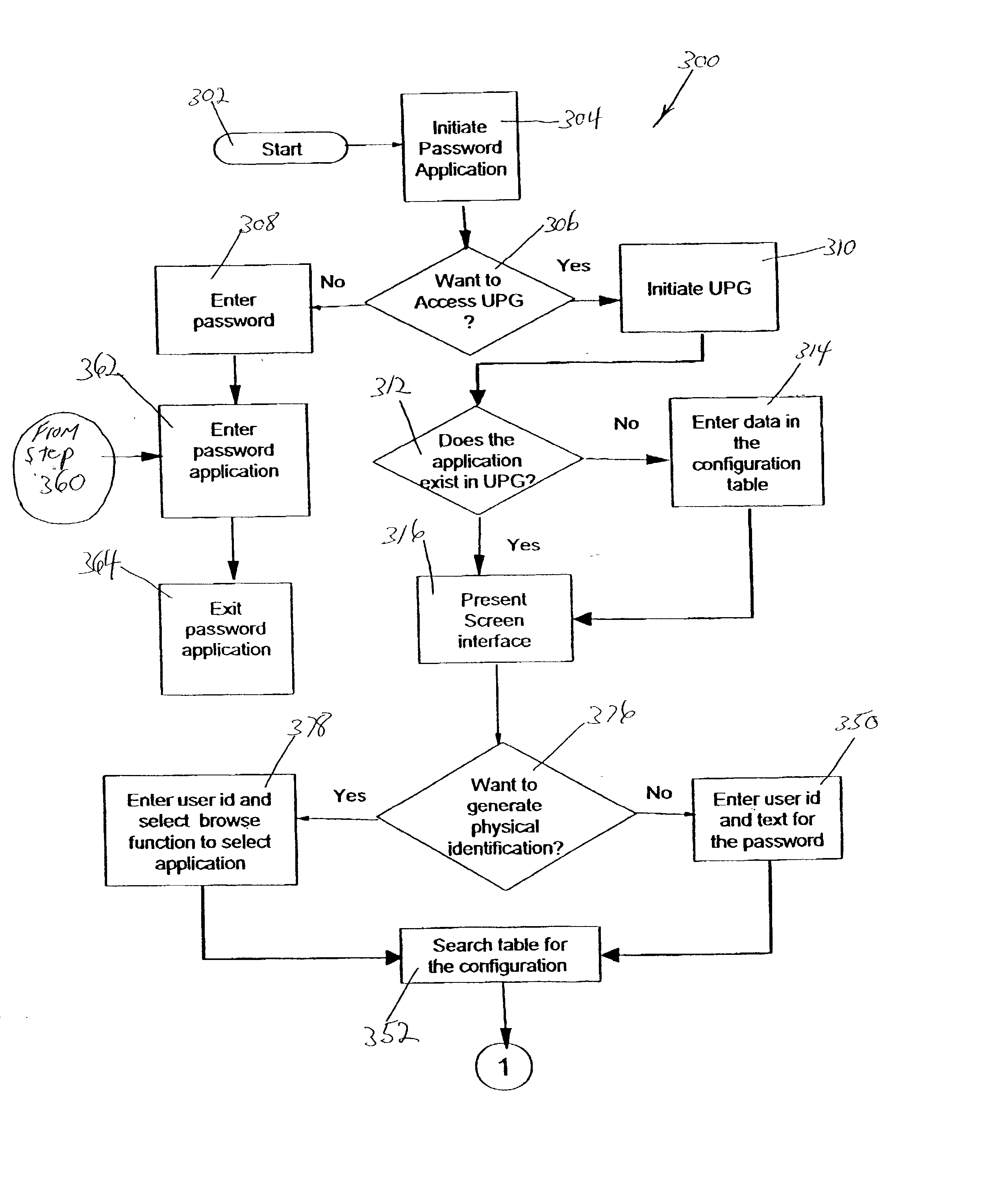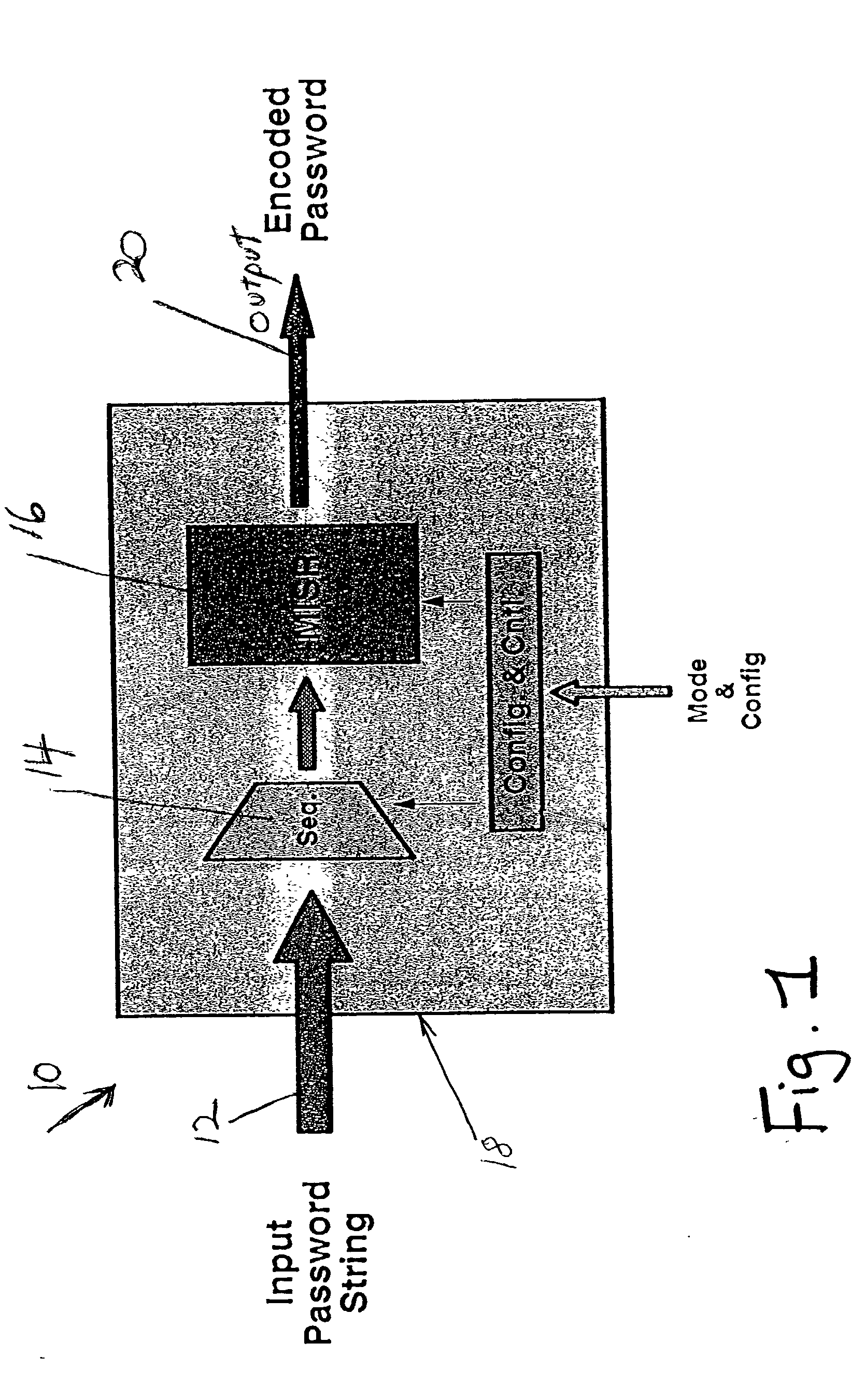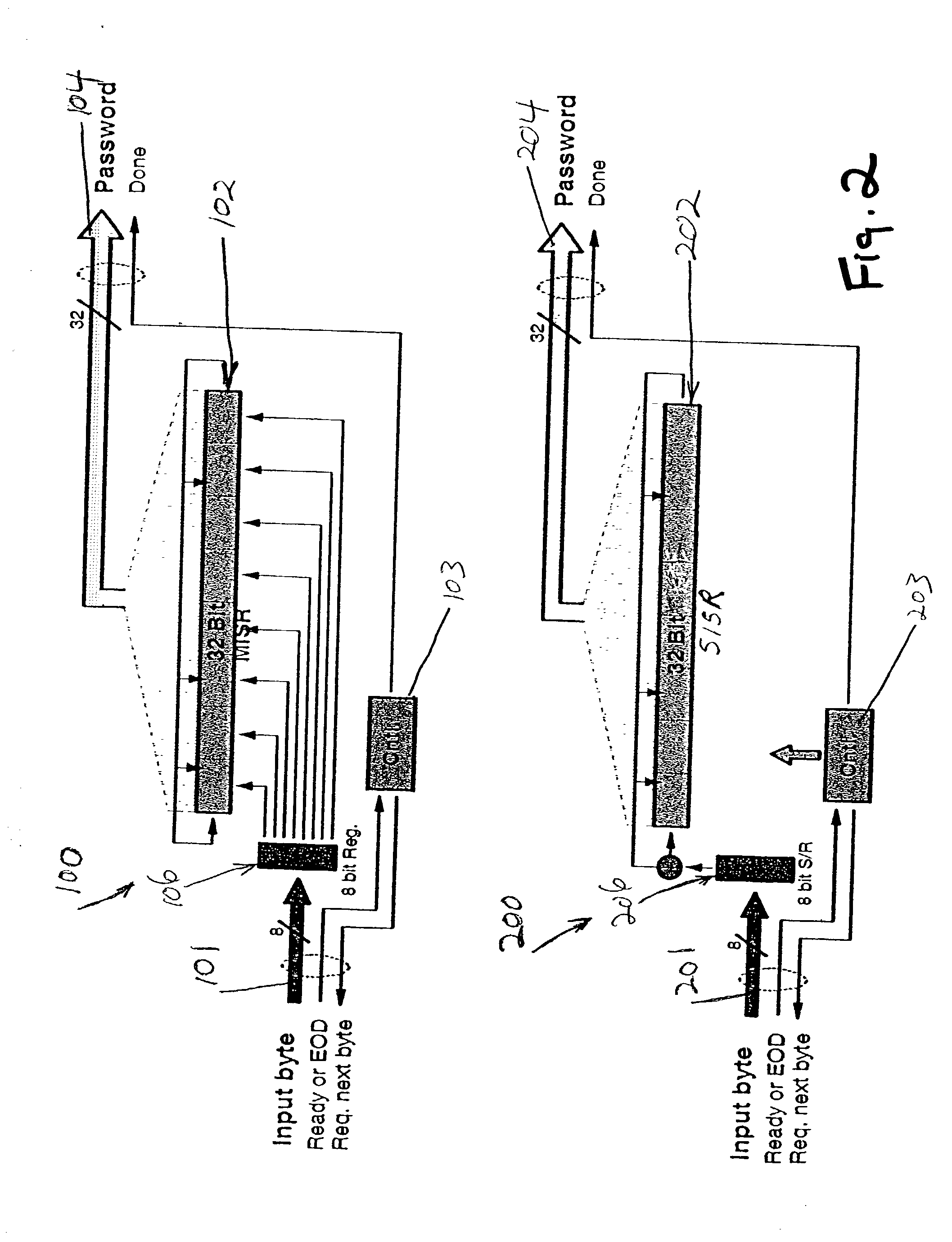[0066] Next on the display shown in FIG. 5, the user enters the user id 404 and the text for generating the password 406,
filling in the appropriate text blocks 404, 406. The user id 404 is particular to the application requiring the password and may be of the user's choosing. The text for the password 406 is any text that the user wishes to choose for the password, such as,
alphanumeric text, or a
phrase. An
advantage of the present invention is that the length and other parameters of the text do not have to correspond to the password requirements of the application. The configuration table 500 shown in FIG. 6, and discussed above under subsection "a", will provide incorporation of the parameters required by the application and inputted by the user to the application password, resulting in the particular advantages of the present invention which include
high security and ease of use.
[0067] Referring to FIG. 3, the process flow of the present invention proceeds to the question of whether the user wishes to generate physical evidence 376, which is initiated when the box 408 is checked (FIG. 5) in the interface screen 400. If the user answers in the negative to generating physical identification 376 the user enters the id and text for the password 350, shown in interface screen 400 of FIG. 5. If the user answers affirmatively to generating physical identification 376, the user enters an id and selects an application for
processing physical data 378. The method depicted in the
flow chart shown in FIG. 3, next proceeds to search the table for the configuration 352 as a result of either answering the question posed in step 376 as "yes", via step 378, or "no", via step 350.
[0068] The method of the present invention continues from the steps depicted in FIG. 3 to the steps depicted in FIG. 4. The next step of the method of the present invention, shown in FIG. 4, asks if the application is rule based 320. The user answers the question based on whether the password application has any rules which are required in the password format. An example of password rules are, for instance, a password that must be of length 8 to 12 characters with at least one of the characters being numeric, and may include further rules such as requiring the position of the numeric characters not to be in the first or last position of the password.
[0069] If the application is non-ruled based, the UPG will next process the password with the UPG non-rule based function 356, shown in FIG. 4. In a non-rule based function, the output of the Universal
Password Generator does not have to conform to any particular character in any position of the password. The password is generated using the configuration of the LFSR stored in the LSFR Configuration Table shown in FIG. 6. The particular configuration to use is found by using the URL from the requesting password application to find the stored configuration data. If the URL is not found in the table, the Default URL 504 from the table shown in FIG. 6 is used as the source of the configuration data.
[0070] If the application is ruled based, the UPG will next process the password with the UPG rule based function 354.
Password applications may have a requirement or a combination of requirements including, specific length or range of length, character type such as alpha numeric, or position of characters. Explanation and examples of rule based requirements are found in the rules table of FIG. 7.
[0072] Referring to FIG. 7, the rules table 600 includes six horizontal headings. The first horizontal heading 602 defines the column beneath it as the configuration column. The select column 604, length column 606, alpha / numeric column 607, number alpha column 608, and position column 610 define successive columns from left to right, such that URL1-URLn 612-618 define the parameters for each URL. URL1 612 includes a length requirement from 8 to 12 characters that are alpha numeric (column 606) with at least two numeric characters (column 608) located from the second character moving from left to right and from the second character moving from
right to left (column 610). The select 604 column is filled in by the user to indicate the desired length of the password within the parameter set in the length column 606. The UPG Function will match this requirement by calculating the maximum length in bits to satisfy this condition. For example, using 16 bits to represent a character, the UPG function will examine 16 bits at a time in order to match the requirement for URL1 in FIG. 7. If the requirement is for an alpha character in position one (1), the UPG function examines 16 bit groups moving from left to right until an alpha character is found. Characters not fitting this requirement are discarded. After finding a character, the UPG function will continue searching for characters from left to right.
 Login to view more
Login to view more  Login to view more
Login to view more 


